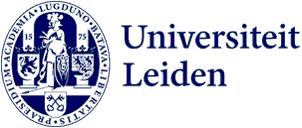
Efficient phosphorus use can prevent cropland expansion
More efficient use of phosphorus fertilisers would make it possible to meet food demand in 2050, without using more of the world’s land for agriculture. This is what environmental scientists José Mogollón and colleagues have discovered by working out various future scenarios for food production and trade. This could be achieved with only 7% more phosphorus fertiliser. And if our future is more sustainable, we would need even less. Publication in Nature Food.
In 2050 around 10 billion people are likely to be living on our planet. To produce food for the population in the same way as we do now, we would need an extra 500 million hectares of cropland. This would be at the expense of natural landscapes in the world, which would have consequences for biodiversity, the climate and liveability. José Mogollón, a researcher at the Institute of Environmental Sciences, together with colleagues from the Netherlands Environmental Assessment Agency (PBL) and the Universidad Politécnica de Madrid, wanted to find out whether this food could be produced without expanding the world’s agricultural land [read the full article].
Five scenarios
‘To grow crops, nutrients such as nitrogen and phosphorus are essential,’ Mogollón explains. ‘If you want to increase the yield, you basically have two options: expand your land or use fertiliser to add nutrients.’ He and his fellow researchers therefore calculated how much more phosphorous fertiliser would be needed to produce enough extra crops on the current cropland. They did this for five different future socioeconomic scenarios.
The study showed that for the middle-of-the-road scenario – the most probable scenario – a total of less than 7% more phosphate fertiliser would be needed until 2050. ‘And if the world develops towards a more sustainable future, then you’d even require less’ says Mogollón. The researchers noted that there are big regional differences. In high-income countries like the United States and Western Europe, the soil is very rich in phosphorus. But in sub-Saharan Africa, relatively nutrient-poor soils become even more depleted due to crop production. ‘Supplementing the phosphorus there with fertiliser is essential for sustaining future crop production,’ Lex Bouwman of the PBL explains.
‘Essential priority’
This is also important to prevent one of the drawbacks of fertiliser use: excess nutrients from agricultural land flowing into the surface water. ‘The less of the added phosphorus is used by crops and animals, the more of it leaches out and the worse the result,’ says Mogollón. That is why it is important, he says, to calculate these kinds of model, both globally and for specific regions. ‘It’s about understanding what phosphorus does to the whole system: does it enter the food chain, does it remain in the soil or does it run off into the surface water?’
Luis Lassaletta of the Universidad Politécnica de Madrid adds: ‘Improving the management of this valuable resource by promoting its reuse and reducing its waste must be an essential priority for humankind in the coming decades.’
The study takes a global and top-down perspective, Mogollón is keen to emphasise. ‘We looked at the global use of fertiliser based on the future demand of crop production in various regions.’ But individual farmers can also benefit from the models. These show that all soils and regions are not the same, and that how you treat the soil has a huge impact on how much phosphorus it retains. Mogollón: ‘It gives a regional context to their everyday farming practice.’
